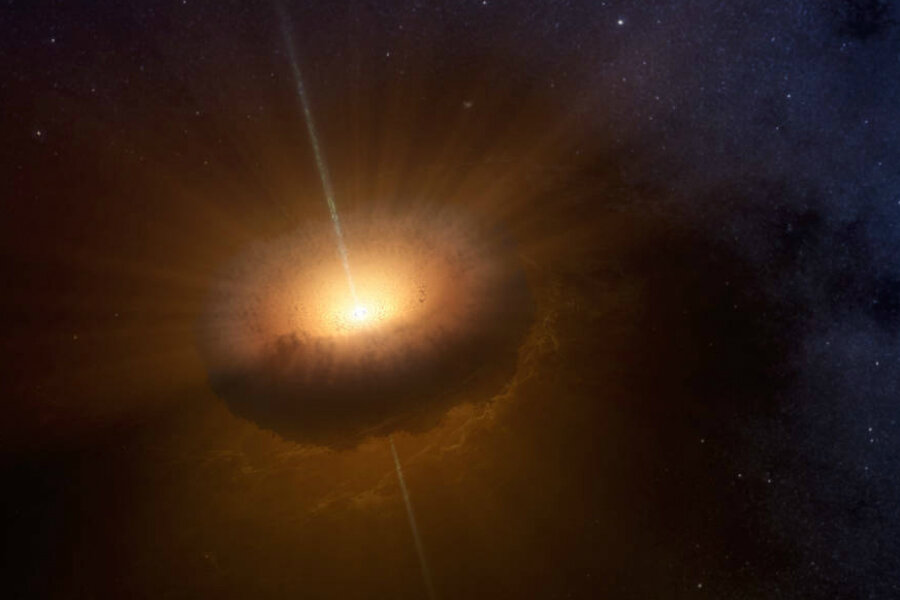A secluded star throws a spectacular tantrum
Loading...
When a young star has an outburst, it doesn’t kick or scream – it shines.
In a rare glimpse of stellar angst, astronomers have documented the effects of a cosmic outburst from CX330, a previously undefined celestial object that researchers say is actually a juvenile star giving off a brilliant glow as it develops. And there's something else exceptional about CX330.
It’s almost totally alone.
"We tried various interpretations for it, and the only one that makes sense is that this rapidly growing young star is forming in the middle of nowhere," astrophysicist Christopher Britt, who led the study of CX330, said in a statement.
In 2009, NASA's Chandra X-Ray Observatory detected a strange source of X-ray light while surveying the Milky Way galaxy. That faint light source, about 25,000 light years from Earth, was CX330, seen for the first time. Later analysis found that CX330 was also giving off optical light, but astronomers stopped short of identifying the object.
Dr. Britt and Thomas Maccarone, both of Texas Tech University were combing through images from NASA’s Wide-field Infrared Survey Explorer (WISE) when they noticed a large amount of heated dust in the area surrounding CX330.
The researchers compared the WISE images, which had been taken in 2010, with Spitzer Space Telescope data from 2007. They found that in three short years, CX330’s brightness had increased several hundred-fold.
When a young star is forming, it may go through a period of outbursts. During this time, the star will consume a large amount of gas and dust, all while spewing "jets" of planetary material back out into space. Intense energetic activity heats the surrounding dust clouds and gives the star a brilliant glow. Britt and colleagues concluded that CX330 must be a young star in outburst.
These outbursts may only last a few years, so astronomers are only rarely able to catch a glimpse. FU Orionis, another prominent outbursting star, was observed in 1937. Since then, only a handful have been recorded.
FU Orionis and its cohorts were all discovered close to star-forming regions. But CX330 is 1,000 light years from the nearest star factory. The young star is also heavier, hotter, and more volatile than its predecessors.
"The disk has probably heated to the point where the gas in the disk has become ionized, leading to a rapid increase in how fast the material falls onto the star," Dr. Maccarone said in a statement.
How could a star form in total isolation? Astronomers are still unsure. CX330 is too young to have traveled all the way from a star-forming region, the researchers say.
"If it had migrated from a star-forming region, it couldn't get there in its lifetime without stripping its disk away entirely," Britt said.
It’s also possible that there are lower-mass stars near CX330, but none have been detected yet. More likely, the answer will come with an improved understanding of star formation.
Some theorize that stars are born in turbulence. According to this model, a gas cloud may become increasingly dense until gravity causes it to collapse into a star. Another, the "competitive accretion" model, operates on the suggestion that stars begin as low-mass cores brawling over surrounding gas – a cosmic game of "Hungry Hungry Hippos."
The turbulence model, which could theoretically produce an isolated star, may explain CX330 best. And given its youthful ferocity, the star will most likely remain alone.
"If it's truly a massive star, its lifetime is short and violent, and I wouldn't recommend being a planet around it," Joel Green, a researcher at the Space Telescope Science Institute in Maryland and a co-author on the study, said in a statement. "You could experience some pretty intense heat for a few centuries."








